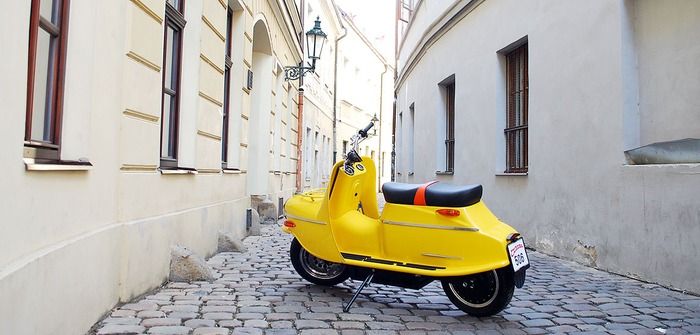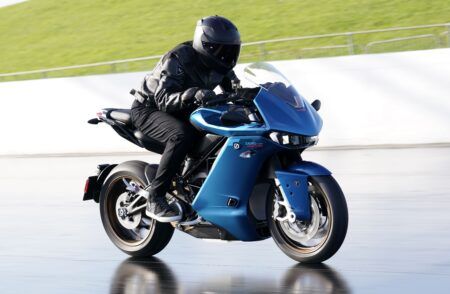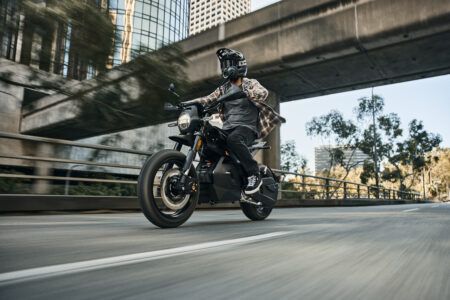The history of the automotive industry has no shortage of fallen icons – famous names that have struggled to keep up with economies of scale, fallen out of fashion, or simply been left behind by advancing technology. But for the Cezeta – a famous motor scooter that was manufactured in what was Czechoslovakia in the 1950s and 1960s – the decline was down to a broader paradigm shift, and its reinvention is altogether more niche.
“Motorcycle production wasn’t a thing for the communists,” explains Neil Smith, the man bringing Cezeta back to life. “They thought socialism’s future was on four wheels, so they started investing everything in cars.” Smith, a British expat and the CEO of the relaunched Cezeta, is a long-time fan of the scooters. In 2013 he was retired and took the opportunity to revive the iconic brand as an electric bike – the Type 506. “I was doing it for a hobby, working on scooters just like I had done when I was younger. I had time and, luckily, a bit of money, and I wanted to bring this part of the country’s history back.”
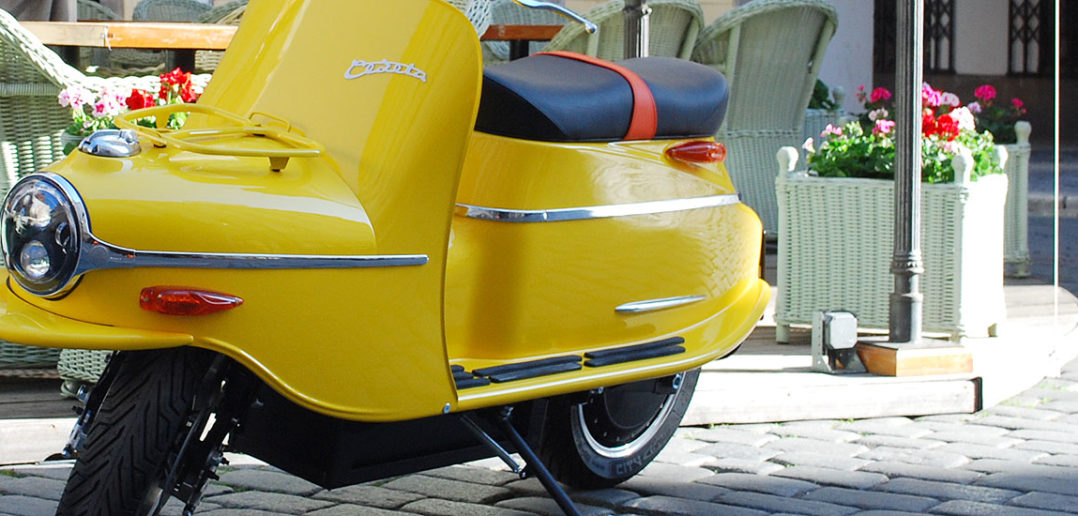
Surface appeal
Smith built the first prototype bikes himself, in the same barn from which he’s now talking to E&H Vehicle. “We kept the look of the old bike because that was the best thing about it,” he explains. “But only the surface looks the same, everything else is different.” The Type 506’s motor comes from China, but goes through retuning at the Cezeta facility in Prostejov – Smith’s first choice was to build the Type 506 in the original Cezeta factory in Strakonická, but soon found that any interest, expertise and molds relating to the old vehicle were long gone. Smith had originally hoped to source every part of the Type 506 from the Czech Republic, but the desire to fit the new bike with a hub motor made Chinese supplier QS Motor a more logical choice. “A bike with a separate motor has a belt or chain. The nice thing about a hub motor is that it’s silent – with a separate, you can do something with the gearing and the teeth, but there’s still a whining.”
The Cezeta team opens up the QS Motor, upping the power and adding in safety elements. “The most powerful one they could deliver was 8kW continuous, so we toyed around with it and got it up to 9.6kW and added a thermistor – unbelievably there isn’t one included – which is vital because, once the temperature gets high, you need some way to communicate that to the regulator so that you can drop the amps to allow the motor to cool.”
Panasonic lithium-ion 18650 cells – the same ones that are used by Tesla – are built into packs by the Cezeta team, while the Type 506’s BMS is proprietary. In fact, aside from the untuned motor and the individual battery cells, most of the new Cezeta has been developed in house. The Type 506’s braking system, which includes KERS, is a combined assembly developed by the Cezeta team, consisting of an electromagnetic brake on the throttle and a mechanical brake.
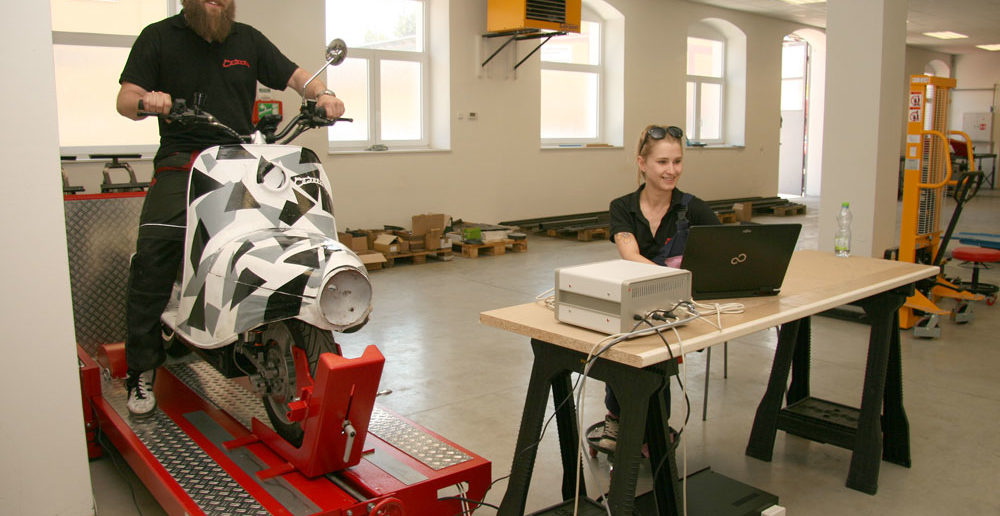
The new Cezeta motorcycle is available in two variants – the 506/01 accelerates from 0-50km/h in 4.5 seconds and has a top speed of 85km/h, while the 506/02 does the same sprint in 2.7 seconds and tops out at 120km/h. The Type 506’s maximum range is 150km (a touring trailer, planned for 2017, will increase this to 250km).
Production is underway, and the first bikes should ship out toward the end of July. Smith aims to scale up production, but is keen to stress that the new Cezeta will be a thing of quality, not quantity. “The plan is that we
would like to sell 300 next year, 600 the year after and 900 the year after that, until we get up to around 1,000 bikes a year. We can’t flood the market; it would lose its cachet and its position. You can’t just put the Cezeta name on something that isn’t the best of the best. The time to move into this market is now, and it’s important to do it in a way that makes this country proud.”


